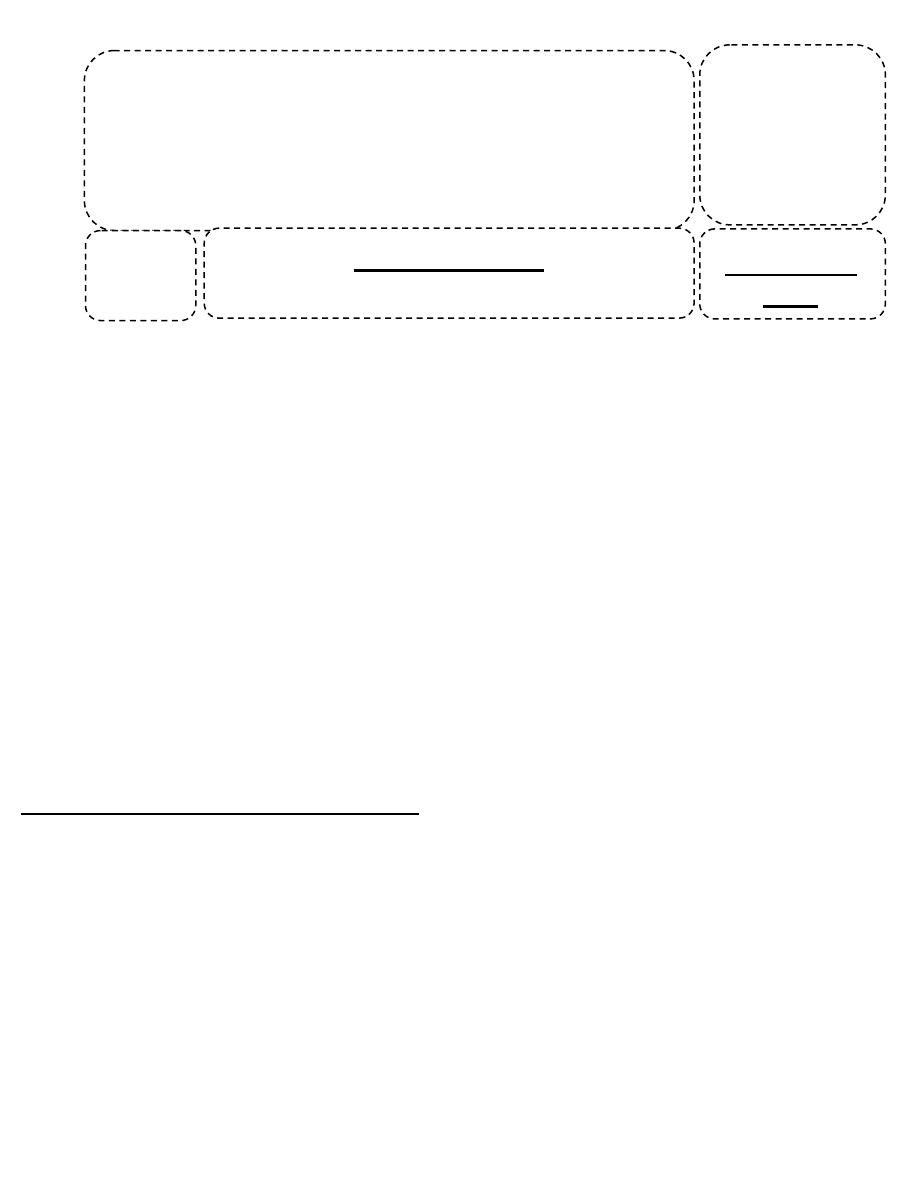
• Psychotherapy: refers to the variety of psychological interventions that share the goal of
alleviating human problems and facilitating effective functioning in society.
• Some psychotherapists (such as psychoanalysts) believe that modification of behavior is
dependent on the individual’s understanding of his or her unconscious motives and conflicts.
• Others such as behavior therapists and cognitive – behavior therapists focus on changing
habitual patterns of thinking and behavior rather than on unconscious conflicts.
• Despite differences in techniques, most methods of psychotherapy have certain basic features in
common. They involve helping relationship between two people: the client (patient) and the
therapist.
• The client is encouraged to discuss intimate concerns ,emotions and experiences freely without
fear of being judged by the therapist or having confidences betrayed.
• The therapist in turn offers empathy and understanding , engenders trust, and tries to help the
client develop more effective ways of handling problems.
Common factors in psychotherapy
1. Listening and talking.
2. Release of emotion.
3. Giving information.
4. Providing understanding of the problem by the patient.
5. Restoration of self-esteem (morale).
• Suggestion.
• Guidance and advice.
• The therapeutic relationship
Psychiatry
Psychotherapy
Lecture
24
Dr. Mushtaq
Talib
Al-Madena
Copy

Transference
• Transference: the relationship between the patient &the therapist has two components :realistic
& unrealistic.
• The realistic component is the therapeutic alliance; the unrealistic component result from
transference.
• The transference elements arise largely because the therapist listens more than he talks. As a
result, the patient reveals personal problems that in other circumstances would be revealed only
(if at all) to a close relation or intimate friend.
• The psychotherapist ,however ,reveals little of his own background or personal beliefs
• The intimacy of the situation is such that the patient reacts to the therapist as if they were closely
related.
• Knowing little about the therapist ,the patient imagines what he is like; in doing so the patient
draws on past experience of other significant persons with whom he has experienced a
comparable intimacy usually one or both parents.
• The patient transfers to the therapist some of the feelings and attitudes that originated in
relation to parents or other intimate relatives, hence the process is called transference.
Counter-transference:
• is the therapist’s response in ways that are not simply a reflection of their patient’s personal
qualities but also a displacement on to their patients of their ideas and feelings related to other
figures in the therapists own life.
• By pointing out how their clients are reacting to them, therapists help their clients achieve a
better understanding of how they react to others.
Psychodynamic therapies (Psychoanalysis)
• A key assumption of psychodynamic therapies is that the person’s current problems cannot be
resolved successfully without a thorough understanding of their unconscious basis in early
relationships with parents and siblings.
• The goal of these therapies is to bring conflicts (repressed emotions and motives) into awareness
so that they can be dealt with in a more rational and realistic way.
• There are some techniques used for this purpose like free association and dream analysis.
• In free association the client is encouraged to give free rein to thoughts and feelings and to say
whatever comes to mind without editing or censoring.
• Dream analysis consists of talking about the content of one’s dreams and then free associating to
that content.

• There are two types of psychoanalysis: traditional & brief dynamic psychotherapy.
• Traditional are lengthy, intensive and expensive, while the newer psychodynamic therapies tend
to be more structured and short-term than the traditional therapy.
• Interpersonal therapy is one type of the newer therapies.
Note: this is an overview on the psychoanalysis and Freud theory mentioned by the doctor (not
included in the lecture)
Psychoanalysis and its related therapies are derived from Sigmund Freud’s psychoanalytic theories of the mind.
Freud proposed that behaviors result from unconscious mental processes, including defense mechanisms and
conflicts between one’s ego, id, superego, and external reality. Since the time of Freud, many other
psychoanalytic theories have been developed
FREUD’S THEORIES OF THE MIND
Topographic Theories
1. Unconscious—includes repressed thoughts that are out of one’s awareness;
Involves primary process thinking (primitive, pleasure-seeking
Urges with no regard to logic or time, prominent in children and psychotics)
2. Preconscious—contains memories that are easy to bring into awareness
3. Conscious—involves current thoughts and secondary process thinking
(logical, mature, and can delay gratification)
Structural Theories
1. Id—unconscious; involves instinctual sexual/aggressive urges and primary
process thinking
2. Ego—serves as a mediator between the id and external environment
and seeks to develop satisfying interpersonal relationships; uses defense
mechanisms (see below) to control instinctual urges and distinguishes fantasy from reality using reality testing.
Problems with reality testing occur in psychotic individuals.
3. Superego—moral conscience
Behavior therapies
• Behavior therapy includes a number of therapeutic methods based on the principles of learning
and conditioning.
• Behavior therapists assume that maladaptive behaviors are learned ways of coping with stress
and that some of the techniques developed in experimental research on learning can be used to
substitute more appropriate responses for maladaptive ones.
• Behavior therapy attempts to modify behaviors that are maladaptive in specific situations. In the
initial session, the therapist listens carefully to the client’s statement of the problem. What does
exactly the client want to change, is it a fear of flying or of speaking in public? Difficulty in
controlling eating or drinking? Inability to concentrate and get work done? The first step is to
define the problem clearly and break it down into a set of specific therapeutic goals.
• Once the behaviors that need to be changed have been specified, the therapist and client work
out a treatment program, choosing the treatment method that is most appropriate for the
particular problem.

Types of behavioral therapies
1. Systematic desensitization
• Is a method of eliminating fears by substituting a response that is incompatible with anxiety-
namely relaxation.
• It is difficult to be both relaxed and anxious. The client is first trained to relax deeply. One way
is to progressively relax various muscles, starting for example , with the feet & ankles and
proceeding up the body to the neck and face.
• The next step is to make up a hierarchy of the anxiety producing situations. The situations are
ranked in order from the one that produces the least anxiety to the one that produces the most.
• In systematic desensitization , the client is then asked to relax and imagine each situation in the
hierarchy, starting with the one that is least anxiety producing.
2. In vivo exposure
• is a method that is highly similar to systematic desensitization that requires the client to actually
experience the anxiety –producing situations.
3. Selective reinforcement (token economy)
• Strengthening of specific desired behaviors ,is based on the principles of operant( instrumental )
conditioning. and has also proved to be an effective method of modifying behavior ,especially in
children.
4. Aversion therapy:
• A form of conditioning that involves the repeated coupling of an unpleasant or painful stimulus ,
such as an electric shock ,with an undesirable behavior.
• In a less controversial form of aversion therapy , the patients couples imagining something
unpleasant with the desired behavior.
• It is used to treat substance abuse.
5. Flooding
• A technique in which the patient is exposed immediately to the most anxiety provoking stimulus(
e.g., the top of tall building if he or she is afraid of heights) instead of being exposed gradually or
systematically to a hierarchy of feared situations.
• If this technique is carried out in the imagination rather than in real life , it is called implosion.
• Flooding therapy is useful in treatment of phobias ,provided that the patient can tolerate the
associated anxiety.

6. Assertive training:
• A variety of techniques, including role modeling ,desensitization , and positive reinforcement are
used to increase assertiveness.
• To be assertive requires that people have confidence in their judgment and sufficient self –esteem
to express their opinions.
• Social skills training deals with assertiveness but also attends to a variety of real life tasks, such
as food shopping, looking for work, interacting with other people, and overcoming shyness.
Cognitive-Behavioral Therapy (CBT)
• This therapy is based on the theory that behavior is determined by the way in which persons
think about themselves and their roles in the world.
• Maladaptive behavior is secondary to ingrained, stereotyped thoughts, which can lead to
cognitive distortions or errors in thinking.
• The theory is aimed at correcting cognitive distortions and the self-defeating behaviors that
result from them.
• Cognitive therapy has been most successfully applied in the treatment of mild to moderate
non-psychotic depression. It also has been effective as an adjunctive therapy in substance
abuse, and in increasing compliance with medication. It has been used recently to treat
schizophrenia.
Hypnosis
• Hypnosis is a complex mental state in which consciousness is altered in such a way that the
subject is amenable to suggestion and receptive to direction by the therapist.
• When hypnotized, the patient is in a trance state ,during which memories can be recalled and
events experienced .
• The material can be used to gain insight into the makeup of a personality.
• Hypnosis is used to treat many disorders, including obesity, substance –related disorders
(especially nicotine dependence), sexual disorders and dissociative states.
Biofeedback
• Biofeedback provides information to a person about his or her physiologic function, usually
related to the autonomic nervous system (e.g, blood pressure), with the goal of producing a
relaxed, euthymic mental state.
• It is based on the idea that the autonomic nervous system can be brought under voluntary control
through operant conditioning.
• It is used in the management of tension states associated with physical illness (headaches,
hypertension).
Interpersonal Therapy
• This is a short term therapy, lasting 12-16 weeks, developed specifically for the treatment of
non-bipolar, non-psychotic depression.

• Emphasis on current interpersonal relationships and on strategies to improve the patient’s
interpersonal life.
• Antidepressant medication is often used as an adjunct to interpersonal therapy.
• The therapist is very active in helping to formulate the patient’s predominant interpersonal
problem areas, which define the treatment focus.
Family therapy
• Family therapy is based on the theory that a family is a system that attempts to maintain
homeostasis, regardless of how maladaptive the system may be.
• Family therapy concentrates on the family rather than on the patient.
• One of the major goals of family therapy is to determine what homeostatic role, however
pathological; the identified patient is serving in the particular family system.
• A family therapist’s goal is to help the family understand that the identified patient’s symptoms
in fact serve the crucial function of maintaining the family’s homeostasis.
• The role of the therapist is to help the family to correct malfunctioning attitudes.
• Family therapy is useful in treatment of childhood disorders.
Group therapy
• Group therapies are based on many theories like the individual therapies.
• Groups range from those that emphasize support and an increase in social skills, to those that
emphasize specific symptomatic relief, to those that work through unresolved intrapsychic
conflicts.
• Two main benefits for group therapy compared to individual therapy: opportunity for immediate
feedback from a patient’s peers and the chance for both patient and therapist to observe a
patient’s psychological, emotional, and behavioral responses to variety of people.
• Therapeutic factors in group therapy include: abreaction, acceptance, altruism, catharsis,
cohesion, empathy, identification, imitation, insight, inspiration, interaction, and learning.
Groups can be homogeneous or heterogeneous, depending on the diagnosis.
• Examples of homogeneous groups are those for patients attempting to lose weight, or to stop
smoking or have the same medical problem ( AIDS,PTSD, substance abuse).
• There are many types of group therapies:
1. Alcoholics Anonymous (AA).
2. Milieu therapy.
Multiple family groups

Couple & Marital therapy
• As many as 50% of patients are estimated enter psychotherapy primarily because of marital
problems, another 25% experience marital problems along with their other presenting problems.
• Couple or marital therapy is designed to psychologically modify the interaction of two people
who are in conflict with each other over one parameter or a variety of parameters- social,
emotional, sexual or economic.
• As in family therapy, the relationship rather than either of the individuals is viewed as the
patient.
